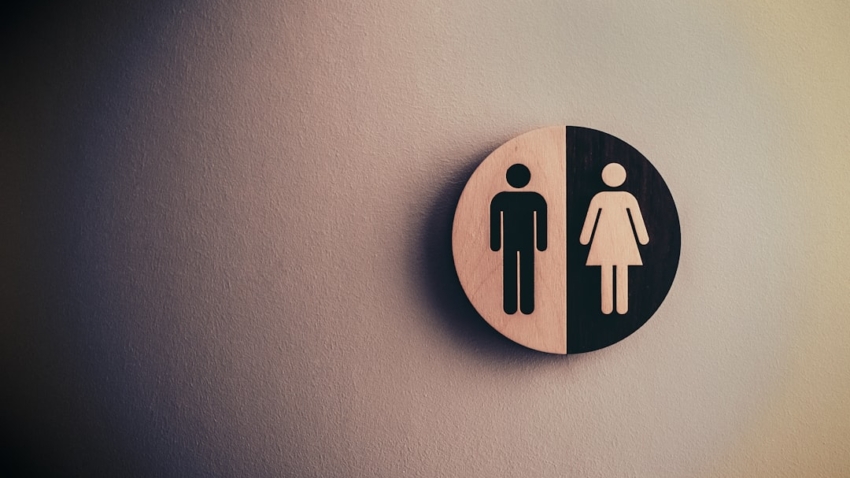
Decoding Bathroom Signs: Navigating Gender-Neutral Restrooms
Gender-specific bathroom signs have a long and complex history that dates back to the 19th century. In the late 1800s, public restrooms were segregated by race, and gender-specific signs were not yet common. However, as the women’s rights movement gained momentum, the need for separate facilities for men and women became apparent. This led to the widespread adoption of gender-specific bathroom signs in public spaces, with “Ladies” and “Gentlemen” signs becoming the norm.
The use of gender-specific bathroom signs continued into the 20th century, with little consideration for individuals who did not fit neatly into the binary categories of male and female. This lack of inclusivity led to discrimination and discomfort for transgender and gender non-conforming individuals who were forced to choose a restroom that did not align with their gender identity. As society’s understanding of gender identity evolved, so too did the conversation around bathroom signage. In recent years, there has been a push for more inclusive restroom facilities, leading to the rise of gender-neutral restrooms.
Key Takeaways
- Gender-specific bathroom signs have a long history, with separate facilities for men and women becoming the norm in the 19th century.
- The rise of gender-neutral restrooms reflects a growing awareness of the need for inclusive spaces for people of all gender identities.
- Understanding gender identity and inclusivity is crucial for creating welcoming environments for everyone, regardless of how they identify.
- Navigating gender-neutral restrooms can be made easier with simple tips for everyone, such as respecting privacy and using inclusive language.
- Addressing common concerns and misconceptions about gender-neutral restrooms can help dispel myths and promote understanding and acceptance.
The Rise of Gender-Neutral Restrooms
The push for gender-neutral restrooms has gained traction in response to the growing awareness of gender diversity and the need for inclusive spaces. Gender-neutral restrooms, also known as all-gender or unisex restrooms, are designed to be accessible to people of all gender identities. These restrooms typically feature signage that is not specific to any one gender, often using symbols or text that indicate the restroom is open to all. The rise of gender-neutral restrooms has been driven by advocacy from LGBTQ+ communities, as well as a broader cultural shift towards recognizing and respecting diverse gender identities.
In addition to advocacy efforts, many businesses and institutions have recognized the benefits of providing gender-neutral restroom facilities. By offering inclusive restroom options, organizations demonstrate their commitment to diversity and create a more welcoming environment for all patrons and employees. The rise of gender-neutral restrooms has also been supported by legislation and policies aimed at protecting the rights of transgender and gender non-conforming individuals. As a result, many public spaces, workplaces, and educational institutions have begun to implement gender-neutral restroom facilities to better serve their communities.
Understanding Gender Identity and Inclusivity
Understanding gender identity is crucial to creating inclusive spaces, including gender-neutral restrooms. Gender identity refers to a person’s internal sense of their own gender, which may or may not align with the sex they were assigned at birth. While many people identify as male or female, there are also individuals whose gender identity falls outside of these traditional categories. This includes transgender individuals, who may transition from the gender they were assigned at birth to their true gender, as well as non-binary and genderqueer individuals who do not exclusively identify as male or female.
Inclusivity means creating environments that are welcoming and affirming of all gender identities. This includes providing access to facilities such as gender-neutral restrooms that accommodate individuals of diverse gender identities. Inclusive spaces also involve using language and signage that is respectful and affirming of all genders, as well as fostering a culture of acceptance and understanding. By understanding gender identity and embracing inclusivity, we can create environments where everyone feels valued and respected.
Navigating Gender-Neutral Restrooms: Tips for Everyone
| Tip | Description |
|---|---|
| Respect signage | Follow the signage on the restroom door to ensure you are using the appropriate facility. |
| Be mindful of language | Avoid using gendered language when referring to or discussing gender-neutral restrooms. |
| Respect privacy | Be mindful of others’ privacy and personal space while using gender-neutral restrooms. |
| Advocate for inclusivity | Encourage the use and availability of gender-neutral restrooms in public spaces. |
Navigating gender-neutral restrooms can be a new experience for many people, but with some basic tips, it can become a comfortable and inclusive practice for all. First and foremost, it’s important to respect the privacy and comfort of others in the restroom. This means refraining from staring or making comments about others using the facilities, regardless of their gender identity. Additionally, it’s important to use inclusive language when referring to restroom facilities, such as “restroom” or “toilet” rather than gendered terms like “men’s room” or “women’s room.”
For individuals who may feel uncomfortable using a gender-neutral restroom for the first time, it can be helpful to remember that everyone has the right to use the restroom that aligns with their gender identity. It’s also important to recognize that gender-neutral restrooms are designed to be inclusive spaces for all individuals, regardless of their gender identity. By approaching gender-neutral restrooms with an open mind and a respectful attitude, we can create a more inclusive environment for everyone.
Addressing Common Concerns and Misconceptions
The rise of gender-neutral restrooms has sparked some concerns and misconceptions among certain individuals. One common concern is related to safety and privacy in gender-neutral restrooms. However, it’s important to note that there is no evidence to suggest that gender-neutral restrooms are less safe than traditional gender-specific facilities. In fact, many people feel safer in gender-neutral restrooms because they are less likely to experience harassment or discrimination based on their gender identity.
Another misconception is that providing gender-neutral restrooms will be costly or difficult to implement. In reality, many businesses and institutions have successfully transitioned to gender-neutral restroom facilities with minimal cost and effort. Simple changes such as updating signage and making small adjustments to existing restroom layouts can make a significant impact in creating more inclusive spaces.
The Legal Landscape of Gender-Neutral Restrooms

The legal landscape surrounding gender-neutral restrooms has evolved in recent years to better protect the rights of transgender and gender non-conforming individuals. Many jurisdictions have implemented laws and policies that prohibit discrimination based on gender identity in public accommodations, including restroom facilities. These laws often require businesses and public spaces to provide access to restroom facilities that align with an individual’s gender identity.
In addition to local laws and policies, there have been significant legal victories at the federal level that have expanded protections for transgender individuals in accessing restroom facilities. For example, in 2020, the U.S. Supreme Court ruled that Title VII of the Civil Rights Act of 1964 protects employees from discrimination based on their sexual orientation or gender identity. This landmark decision has had far-reaching implications for protecting the rights of transgender individuals in accessing restroom facilities in the workplace.
Creating Inclusive Spaces: Implementing Gender-Neutral Restrooms in Public and Private Settings
Creating inclusive spaces through the implementation of gender-neutral restrooms is an important step towards fostering diversity and acceptance in public and private settings. Businesses and institutions can take proactive steps to implement gender-neutral restroom facilities by updating signage, making necessary renovations to existing facilities, and providing education and training for staff on creating inclusive environments.
In addition to physical changes, creating inclusive spaces also involves fostering a culture of respect and understanding towards diverse gender identities. This can be achieved through education and awareness initiatives that promote understanding of gender diversity and inclusivity. By taking these steps, businesses and institutions can demonstrate their commitment to creating welcoming environments for all individuals.
In conclusion, the rise of gender-neutral restrooms reflects a growing recognition of the importance of inclusivity and respect for diverse gender identities. By understanding the history of gender-specific bathroom signs, embracing inclusivity, navigating gender-neutral restrooms with respect, addressing concerns and misconceptions, understanding the legal landscape, and creating inclusive spaces through implementation, we can work towards creating environments where everyone feels valued and respected, regardless of their gender identity.
FAQs
What are bathroom signs?
Bathroom signs are visual indicators that are used to designate the location of restrooms and to indicate which restroom is for males, females, or gender-neutral.
What are the common symbols used in bathroom signs?
Common symbols used in bathroom signs include the male and female gender symbols, as well as gender-neutral symbols such as a combination of both male and female symbols or a symbol representing a toilet.
Why are bathroom signs important?
Bathroom signs are important for providing clear and easily recognizable indicators of restroom locations, which is especially helpful in public spaces where visitors may not be familiar with the layout of the building.
What are some examples of different types of bathroom signs?
Examples of different types of bathroom signs include traditional male and female symbols, gender-neutral symbols, braille signs for visually impaired individuals, and signs indicating accessible restrooms for people with disabilities.
Are there any regulations or guidelines for bathroom signs?
In some jurisdictions, there are regulations and guidelines for bathroom signs, particularly regarding accessibility and the use of gender-neutral signage to accommodate individuals of all gender identities.











Leave a Reply
You must be logged in to post a comment.